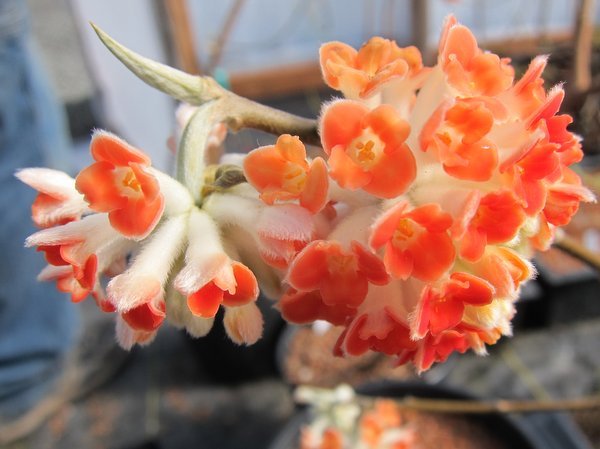Family gardening brings a lot of joy and makes us healthier and happier
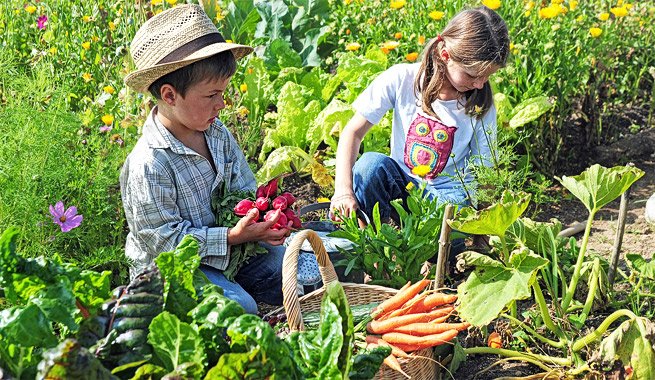
Family gardening has long been respected by people.
Working together brings a lot of joy, develops the skills of mutual assistance and cooperation, unites family members even more tightly.
Outdoor work is indispensable for strengthening our health and immunity, increasing the body’s resistance to diseases.
This is a wonderful way to instill love and respect for nature, people, animals, plants, and for our beautiful planet Earth as a whole.
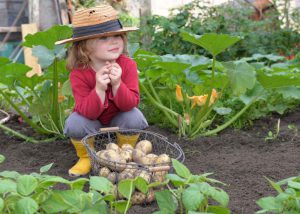
It helps develop a sense of beauty, harmony, kindness, and ultimately brings inner peace and satisfaction with life.
All this prolongs our life, makes it happier and full of deep meaning.
Whether you have an acre of land or a few pots on a balcony, plant a family garden.
Gardening is an easy activity to share and you’ll harvest benefits along with your fresh vegetables, colorful flowers, and aromatic herbs. Even better, you don’t have to wait for your plants to bloom to see these benefits. Some of them (like stress relief) are almost instantaneous.
The benefits of having a family garden
When parents and kids work together to plant and care for a garden, they can all enjoy these perks.
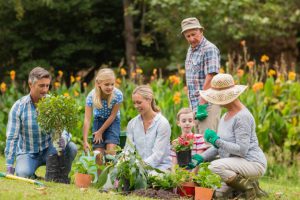
Physical activity
Gardening and yard work are exercises of moderate intensity, which we all need every day (for at least 30 minutes). While tending your family garden doesn’t require the vigorous activity of, say, running or playing singles tennis, it’s still beneficial to your body.
Once you start gardening, it’s common to continue for more than the recommended 30 minutes. And gardening incorporates fine-motor skill strengthening and stretching.

Lower stress, better mood
Gardening is an excellent stress reliever for a combination of fascinating reasons: exposure to fresh air and sunlight, relaxing and repetitive tasks, and even contact with harmless bacteria in the soil that helps release serotonin in the brain.
Outdoor time
Children are prone to spending a lot of time indoors, which can negatively affect their behavior and health. A family garden gets them outside enjoying and experiencing the natural world.
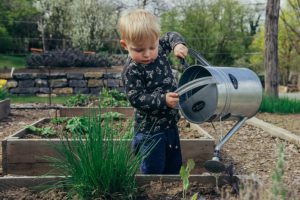
Better sleep
All of the above mentioned factors (physical activity, reduced stress, being outside) can contribute to more and better sleep for everyone. And better sleep, in turn, can improve kids’ behavior and performance at school.
Healthier eating
Kids who grow vegetables eat vegetables or at least, they are more willing to taste unfamiliar veggies, which is the first step to incorporating those new flavors into their diet. Adults who garden are also more likely to eat more fruits and vegetables than non-gardeners.
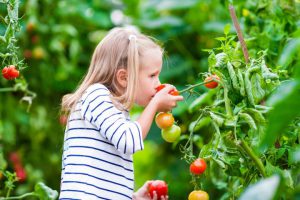
Family time
Planning, sowing, and tending a family garden offers physical activity with a purpose shared by everyone.
Gardening helps teach kids responsibility and gives them a sense of accomplishment. It gives all of you a project to work on—and enjoy—together, which reinforces your family bond.
Project for your family garden
Consult with an expert neighbor, a family member, a local nursery, or a cooperative extension service to find out what plants will grow best where you live. You might consider investing in a rain barrel and starting a compost pile to make your garden more Earth-friendly, too.
If you have limited outdoor space, planting in containers is a good way to try out gardening. Even if you do have space, starting with containers can be a good introduction to gardening for little ones.
Vegetables
Start them from seed, or purchase seedlings to get a jump-start. If your kids have a favorite vegetable, it’s definitely worth letting them try to grow their own. You can find favorites like carrots, string beans, bell peppers, and potatoes in kid-appealing purple hues. Tomatoes, too, come in dozens of colors, shapes, and sizes.
Quick-growing plants, such as radishes, peas, cucumbers, and many herbs, are satisfying for kids to grow. And if your children are very small, remember that it’s easier for them to plant veggies with larger seeds, like peas, corn, and beans.
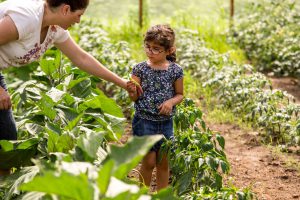
Flowers
There are lots of options for involving kids in flower gardening. Let them pick out some seeds based on the pretty pictures on the packets. Or choose easy-to-grow sunflowers, which can reach as high as eight feet tall. Simple daisies produce lots of blooms for kids to enjoy, display, and craft with. Other blooms that are easy to grow (and thus less likely to lead to disappointment) are marigolds, snapdragons, and geraniums.
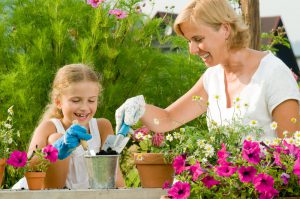
You might also decide to plant with a goal in mind, such as creating a butterfly garden full of plants that attract and nourish butterflies. You’ll get the satisfaction of growing beautiful things while welcoming beautiful creatures.
Fruits
Fruit trees can be difficult to care for and may take several years to yield a harvest. But strawberries are a snap to grow from seeds or seedlings, and blackberries or raspberries can also be an option (plus they’re perennial and will come back year after year).

If you live in a very warm climate or keep them indoors, you can grow your own citrus fruits too.
We wish you good health, joy and a good harvest in your family garden!



